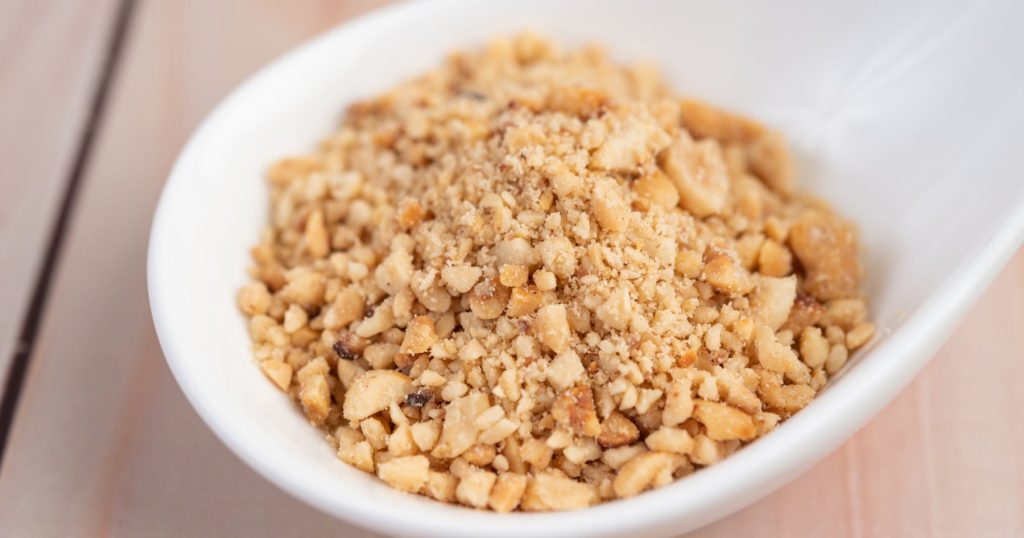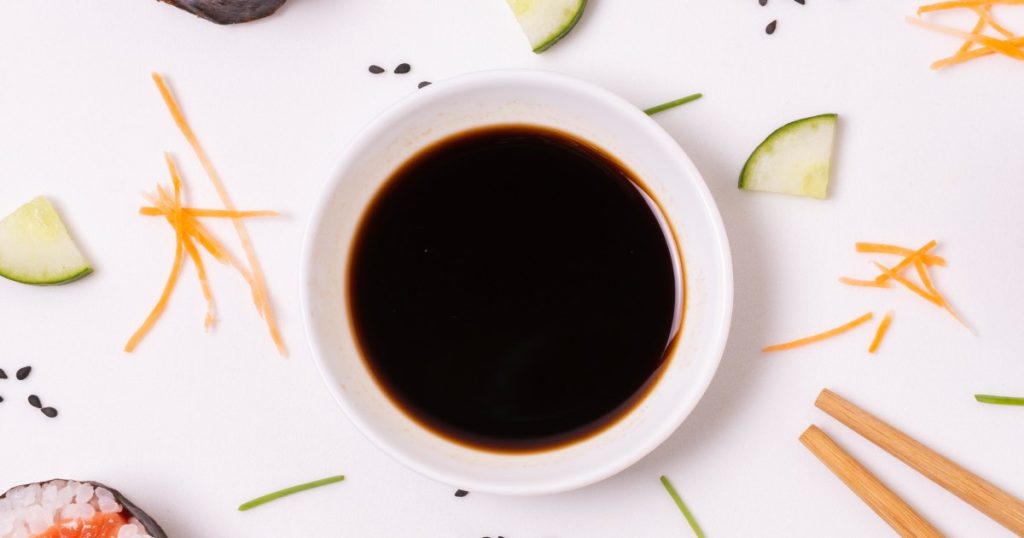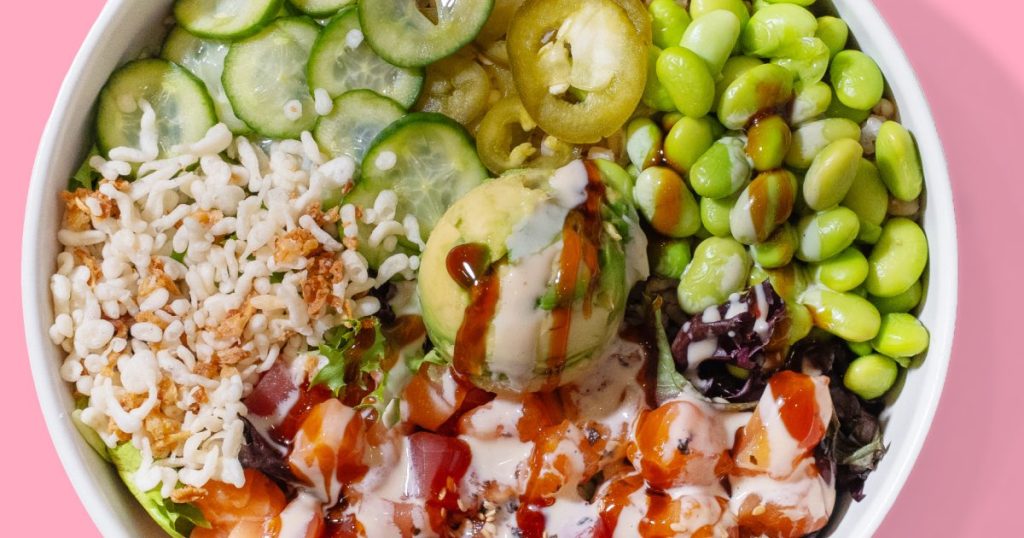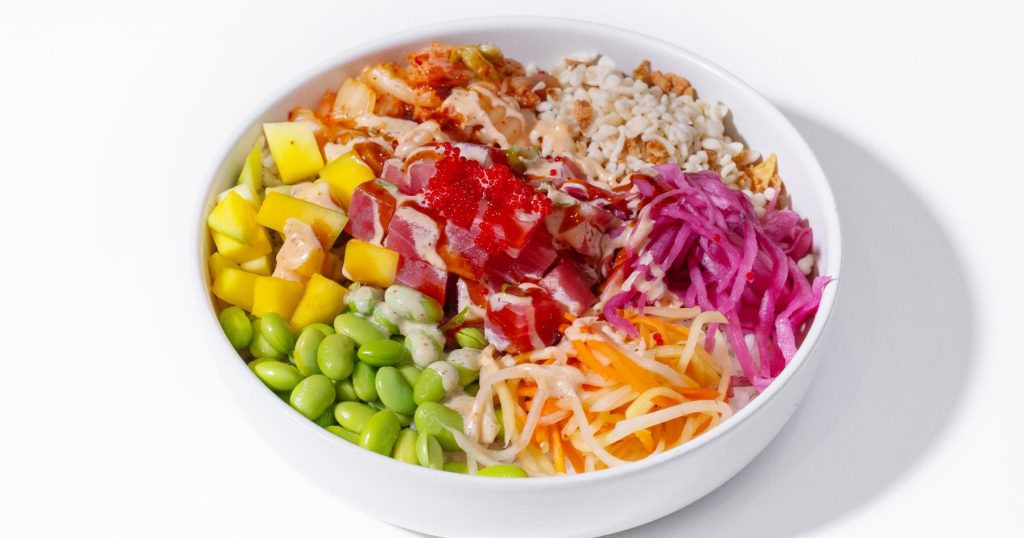When you first encounter a vibrant, colorful poké bowl, your eyes naturally go to the star ingredients: the glistening cubes of fresh ahi tuna or salmon. It’s the protein that gets top billing, but the truth is, the raw fish is only as good as the flavor it swims in. The real secret weapon, the ingredient that takes this dish from a basic seafood snack to a craveable, complex meal, is the sauce.
The poké sauce is not just a drizzle; it is the true flavor driver and the unsung hero that harmonizes every element in the bowl.
More importantly, the evolution of that simple seasoning tells the complete story of the islands. The poké sauce is a living document of Hawaiian history, a three-stage journey that mirrors the arrival of new cultures, transforming the dish from a simple fisherman’s rub into a complex, global, and highly customizable marinade.
Ready to trace the sauce from the sea salt of ancient Hawaii to the spicy mayo of today?
Let’s dig in!
Phase 1: The Original Hawaiian Seasoning

Before any outside influence reached the islands, the earliest version of poké was a practical, sustenance-based snack prepared by native Hawaiian fishermen. This was the purist’s poké, defined by the immediate ingredients of the land and sea.
This initial preparation wasn’t a liquid sauce or marinade as we know it today; it was a simple, intense rub.
- Hawaiian Sea Salt (‘Alaea): This was the primary seasoning. Fishermen would use sea salt to cure the freshly-caught reef fish, replacing the flavor of the ocean with a clean, mineral savoriness.
- Limu (Seaweed): Various species of local seaweed were chopped and mixed in, adding a vital layer of brininess, freshness, and a unique, soft crunch.
- Inamona (Crushed Kukui Nut): The final, most unique touch was Inamona: roasted, crushed kukui. This addition brought a subtle, earthy, and slightly smoky richness to the raw fish.
The Key Takeaway: The original poké was a masterful combination of textures and flavors defined entirely by the local ecosystem. It was a simple, intense rub of salt, sea, and earth, a true reflection of the island’s indigenous resources.
Phase 2: Shoyu and Sesame: The Asian Influence
The real transformation of the poké sauce began with the arrival of large groups of Asian immigrants, primarily from Japan and China, in the late 19th and early 20th centuries, coming to work on Hawaii’s plantations. They brought with them staple ingredients that seamlessly integrated into the local diet, replacing the simple rub with a rich, complex liquid marinade.
The Shoyu Swap: Umami Gold
The most impactful change was the introduction of Soy Sauce. Known locally in Hawaii by the Japanese term Shoyu, this ingredient quickly became the essential liquid base.
The shift from Hawaiian sea salt to Shoyu was critical:
- It replaced the intense, raw saltiness with a deeper, smoother, and more fermented flavor, rich in umami.
- Local companies began manufacturing the sauce in Hawaii, starting in 1946, cementing shoyu as the official, local term for soy sauce across the islands.
The Sesame Factor: Nutty Richness
The addition of Sesame Oil provided the necessary counterpoint to Shoyu’s savory depth. This oil, pressed from toasted seeds, introduced a gorgeous, nutty aroma and a smooth, aromatic richness that elevated the fish marinade. This classic combination of Shoyu and Sesame Oil became the backbone of virtually all modern Hawaiian-style poké.
Fresh Aromatics and Brightness
The Asian influence also introduced new aromatics and fresh ingredients:
- Green Onions (Scallions): Added a sharp, fresh bite.
- Ginger and Garlic: Provided essential “pop” and complexity to the simple fish.
The Result: This period gave birth to the Hawaiian-Style Ahi Poké we know and love today, a perfectly balanced dish that is savory, slightly sweet, aromatic, and deeply umami-forward.
Phase 3: Global Fusion and Customization

The final transformation of the poké sauce began in the 1990s and exploded globally in the 2010s, as the dish traveled beyond the islands to the U.S. mainland and worldwide. As poké became a customizable, build-your-own sensation, its sauce offerings diversified wildly to cater to a new, global palate.
The Rise of Heat and Creaminess
This era is defined by the embrace of two major elements: heat and cream.
- The Cream Factor: Simple shoyu and sesame oil were often too light for new audiences. The integration of mayonnaise, often the rich, tangy Japanese Kewpie mayo, provided a creamy, luxurious mouthfeel that Western palates crave.
- The Heat Factor: Spicy sauces like Sriracha were introduced and mixed directly into the mayonnaise base, giving rise to the universally popular Spicy Mayo and Sriracha-based sauces. This instantly appealed to the global trend toward flavorful heat.
Citrus and Zest: The New Balance
To keep the richer, creamier bowls from feeling heavy, chefs began incorporating bright and acidic flavors.
- Ponzu: This thin, tangy dressing made from soy sauce and citrus juice (like yuzu or lemon) provides a refreshing zing that perfectly cuts through rich fish and creamy sauces.
- Yuzu: This fragrant Japanese citrus added a layer of unique, exotic zest to marinades and finishing drizzles.
The Customization Factor
In Hawaii, poké is often sold pre-marinated. In the global poké bar concept, however, the diner selects a sauce for a fresh, unmarinated protein. This means the sauce must be instant and adaptable. The rise of dozens of distinct sauces, from Wasabi Aïoli to Sweet Soy, is a direct result of the modern, build-your-own model, transforming the dish into a true, global fusion experience.
Where to Eat the Best Poké Bowls in Montreal

You’ve traced the sauce from the sea salt of ancient Hawaii to the complex, global fusion of today. The question now is: where in Montreal can you taste this history and experience the perfect balance of every poké phase?
The answer is Olu Olu Poké.
At Olu Olu Poké, our sauces honor the dish’s roots while embracing modern flavor. We invite you to explore our menu and choose your adventure by selecting the marinade that represents your favorite part of the sauce evolution.
Every bowl is an invitation to experience the authenticity and evolution of Hawaiian flavors, prepared with the freshest ingredients and the sauce secrets we’ve just explored.
Conclusion
The poké bowl is not just a healthy meal; it is a culinary artifact. It has evolved from a simple fisherman’s rub of salt, limu, and nut to the balanced, umami-rich Shoyu-Sesame marinade, and finally to the expansive world of Spicy Mayo, Ponzu, and custom fusion flavors. The story of the sauce is truly the story of Hawaii itself, a vibrant melting pot of cultures.
Now that you know the secret life of the sauce, you can appreciate the history in every bite. Ready to try the ultimate version of the dish?
Visit Olu Olu Poké in Montreal today, or place an order online. Taste the history, savor the flavor, and experience the Aloha spirit right here in the city!
Key Takeaways
- Poké Sauce is Hawaiian History. The sauce’s evolution tells the story of the islands, moving from indigenous rubs to multicultural marinades.
- The Original Sauce was a Rub. Before immigration, poké was seasoned with a simple, intense rub of sea salt, limu (seaweed), and kukui nuts, not a liquid marinade.
- Shoyu is the Game-Changer. Japanese and Chinese immigrants introduced soy sauce (Shoyu) and sesame oil, creating the iconic, umami-rich Hawaiian Style poké base.
- Spice and Cream are Modern. The global rise of the poké bowl led to Spicy Mayo, Sriracha, and creamy sauces, appealing to global palates craving heat and richness.
- You Can Taste the History. At Olu Olu Poké, you can choose to experience the classic Shoyu flavor or the modern Spicy Fusion options.











